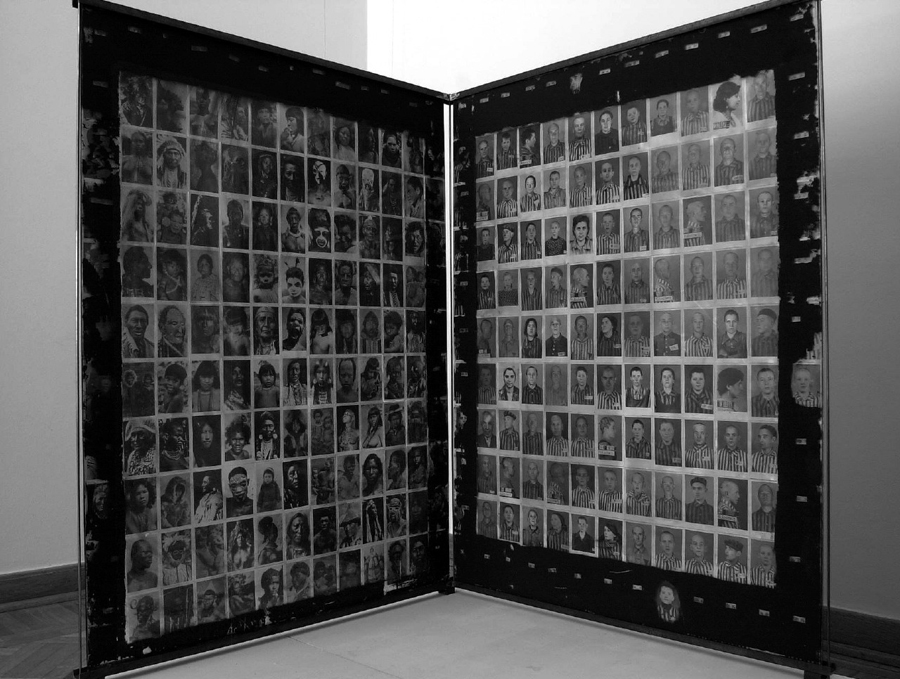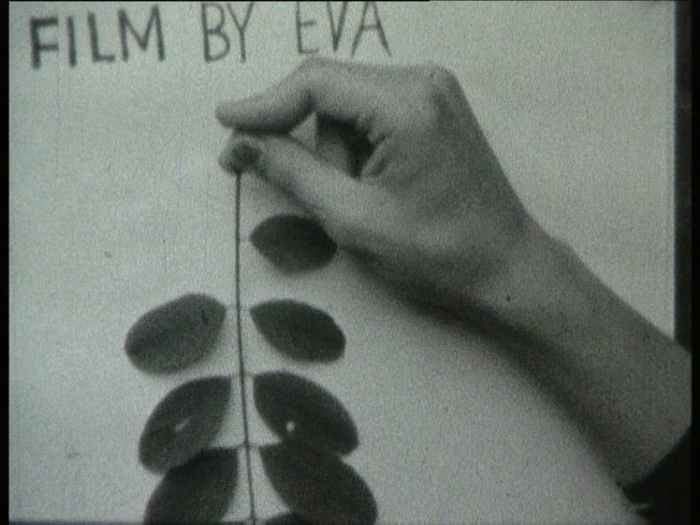Critic’s Guide: Warsaw
The pick of the shows opening today as part of Warsaw Gallery Weekend
The pick of the shows opening today as part of Warsaw Gallery Weekend


Wiktor Gutt and Waldemar Raniszewski, ‘Destructive Culture’
Pola Magnetyczne
23 September – 19 November
Pola Magnetyczne revisits a 1977 exhibition by Wiktor Gutt (b.1949) and Waldemar Raniszewski (1947–2005), who collaborated closely throughout the early ’70s, exploring performance and photography to develop extra-verbal methods of communication. With ‘Destructive Culture’, however, Gutt and Raniszewski departed from their earlier practice. At the centre of the show was a stand-alone object consisting of two panels juxtaposing several dozen photographs of Auschwitz prisoners and members of indigenous tribes from across the world. Originally concealed beneath black-painted panes of glass, the faces of the individuals remained invisible, except for the thin stripe across their eyes; visitors were encouraged to scratch off the paint to reveal the images underneath. While lacking the patently dramatic element of interaction (the portraits are visible), this iteration of ‘Destructive Culture’ is no less topical, questioning an anthropocentric European mind-set that fails to recognize other modes of inhabiting the world.

‘If you don’t know me by now, you will never never never know me’
Arton Foundation
23 September – 30 October
This group show at the Arton Foundation explores how video and film was used by women artists in the 1970s across different parts of the globe: from Poland and the former Yugoslavia to the USA, Canada and Brazil. While the advent of the Portapak camera marked a turning point in the practice of many exponents of the feminist second wave in North America, those living in the Eastern Bloc as well as South America, with little or no access to this equipment, frequently used traditional cameras and 8 or 16mm stock to a similar end, regardless of political and social differences. ‘If you don’t know me …’ brings together iconic works by Martha Rosler, Letitia Parente and Lisa Steele, as well as Sanja Iveković, Natalia LL and Jolanta Marcolla.

Rafał Dominik, ‘After Humans, Before Robots: Top 10 Little Known Stories’
Kasia Michalski
23 September – 17 November
Rafał Dominik (b.1985) works in a variety of media including digital imagery, animation, video, collage and sculpture. For ‘After Humans, Before Robots’ he has tapped into all of these media to create a string of works that conflate the world of mass consumerism with more traditional artistic themes and means of expression. In the space, inhabited by sculptures and bas-reliefs in sandstone and Carrara marble as well as digital prints and lightboxes, Dominik presents a post-human future. Objectivity, a video that serves as the show’s trailer, shows a young woman in a swimming pool, the screen is split vertically in two, with real-life images on one side and a clumsy digital rendering on the other. For the artist, however, both modes appear equally real. ‘This work describes how the world looks like when not perceived with our human eyes,’ he says. ‘I tell stories which objectively recount what is happening with us, humans, in general.’

Bill Jenkins, ‘Substation 6’
Stereo
23 September – 29 October
On one occasion the New York-based artist Bill Jenkins described his practice as ‘useless utility’, and himself as a middleman – an entrepreneur operating in the field between the ‘natural resources’ of architecture and its users or consumers. Whether a 8,000 square feet dilapidated warehouse in Oregon, USA, or here the less sizeable space of Stereo with its perplexing white domed ceiling, Jenkins uses readily available materials to jerry-rig systems through which light flows as a malleable substance. ‘It started as an attempt to solve a common problem in New York City apartments (and many other urban areas) of having little or no light in any given room,’ explained Jenkins, admitting that his approach to the issues of architectural spaces is characterized by ‘the same materials and haste that one would use to fix a broken window or a leak in a pinch.’

Zuzanna Czebatul, ‘Ellipsism’
Piktogram
23 September – 12 November
Following the entrancing solo of Dorota Jurczak for last year’s Warsaw Gallery Weekend, Piktogram again hosts a show of an artist making her debut in Poland. The Berlin-based sculptor Zuzanna Czebatul (b.1986) used powder concrete to create a series of large-scale wall and floor pieces that echo ancient classical sculptures, Christian symbolism and European imaginary. Or, to follow a loose association made by the artist herself, tarot cards, with figures and shapes in soft tones of blue and red and green. While the physicality of the materials is a significant element of the work, the seeming esoteric imagery offers a language with which to explore topical issues of the day. According to the artist: ‘the power change in the public sphere and even more abstract economical forces in the backgrounds of global decision-making seem to be as mysterious and insecure as a psychic’s forecast.’

‘Artists with Lyme Disease’
Dawid Radziszewski
23 September – 29 October
The concepts for group exhibitions put together by gallerist Dawid Radziszewski seem unapologetically straightforward but armed with a critical edge. This time the gallery presents work by individuals affected by Lyme borreliosis. Seemingly inviting the visitors to consider this condition as a key factor influencing the practice of the participating artists and – perhaps more importantly – ultimately mocking the forced effort of many of Radziszewski’s peers to come up with a yet another sophisticated conceptual framework for displaying the output of the represented artists, ‘Artists with Lyme Disease’ is a breather in the WGW line-up.

‘A Stitch in Time Saves Nine’
Wschód
23 September – 25 September
A new arrival to the Warsaw Gallery Weekend, Wschód is an itinerant initiative that, up until this point, had no permanent venue and has parachuted itself to a number of sites and institutions in Poland and beyond. It does, however, have a diverse roster of young individuals (most of them born in the mid-1980s or later), as well as a workshop / studio, that serves as the setting and the point of reference for the exhibition. The massive, hollow artificial rock by Jan Domicz, which forms the centrepiece of the show, is the object inside and around which the other artists’ works are amassed. For one of Wschód’s number, curator Piotr Drewko, ‘A Stitch in Time Saves Nine’ is a mission statement that emphasizes the urgency to act, adapt and re-consider existing structures.

Artur Żmijewski, ‘Collection’
Foksal Gallery Foundation
23 September – 10 November
Having devoted recent years to working with documentary materials, as well as focusing on a curatorial and editorial practice, Artur Żmijewski – whose output was fervently discussed as a model for political engagement – now returns with an exhibition that recasts himself as the author, apparently reconsidering the heritage of the so-called ‘Critical Art’ movement in Poland in a present-day context. In ten black and white films shot on a 16mm camera, Żmijewski accompanies people with physical disabilities as they struggled to move or walk. The films are silent and there is little comment to be heard except Zmijewski poignant statement in which he described the subjects of his works: ‘Their black silhouettes are in motion, but they’re not getting anywhere. Their cinematic trot has no geographical destination. It only describes the movement of a body imprinted with an error – illness, accident, degeneration. And I expand my collection.’
Click here for all the galleries participating in Warsaw Gallery Weekend, 23-25 September.
Main image: Agata Bogacka, Composition With Eyes, 2015, acrylic on canvas, 114 x 146 cm. Courtesy: Dawid Radziszewski Gallery, Warsaw






















